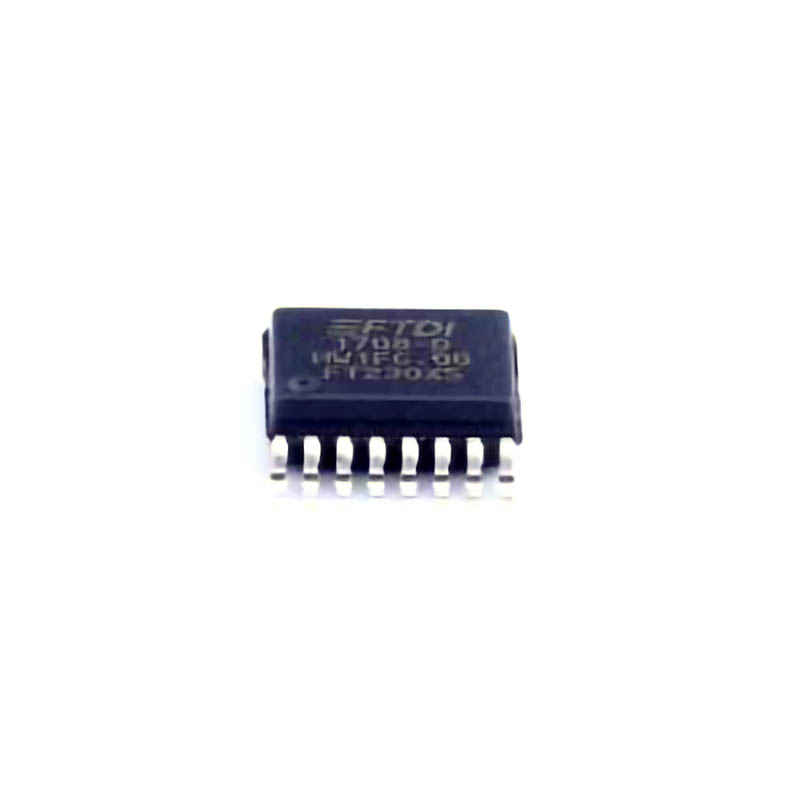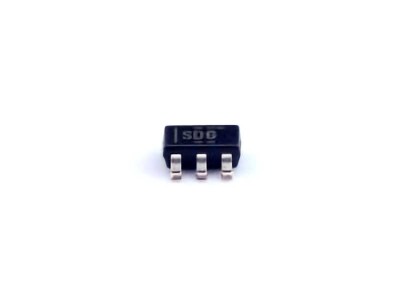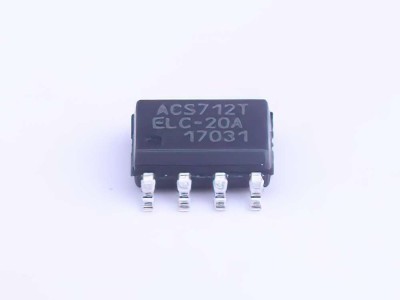
Understanding the FT230XS-R and Common Troubleshooting Issues
The FT230XS-R is a highly reliable USB-to-UART bridge designed by FTDI (Future Technology Devices International). It allows USB-enabled devices to communicate with UART interface s, commonly used in microcontroller projects, embedded systems, and various industrial applications. While the FT230XS-R is known for its solid performance, users may occasionally encounter issues such as connection failures, device recognition problems, or data transfer errors. In this section, we’ll explore the most common issues and how to troubleshoot them effectively.
1. Driver Installation Problems
One of the most common issues users face with FT230XS-R is related to driver installation. The FT230XS-R requires proper FTDI Drivers to function correctly, and without them, your computer may fail to recognize the device.
Troubleshooting Steps:
Check for Correct Drivers : FTDI provides a dedicated driver package for the FT230XS-R, available on their website. Make sure you download the latest version compatible with your operating system (Windows, macOS, or Linux).
Manual Installation: Sometimes, even after downloading the correct drivers, Windows may fail to install them automatically. In this case, you may need to install the drivers manually through the Device Manager. Right-click on the unknown device, select "Update Driver," and point it to the driver folder.
Driver Conflicts: If there are conflicting drivers from previous FTDI devices or other USB-to-UART converters, they may prevent the FT230XS-R from functioning properly. Uninstalling the old drivers and reinstalling the new ones may resolve the issue.
Check for Windows Updates: Ensure your operating system is up to date. Sometimes, missing updates can lead to compatibility issues with newer devices like the FT230XS-R.
2. Device Not Recognized
Another common problem is that the FT230XS-R is not recognized by the computer when connected, or the device appears as an “Unknown Device” in the device manager.
Troubleshooting Steps:
Check the USB Port and Cable: A faulty USB port or cable can cause connectivity issues. Try connecting the FT230XS-R to a different USB port or using a different cable.
Test on Another Computer: If the device is still not recognized, try connecting it to another computer. This will help you determine whether the issue lies with the device itself or your computer.
Power Supply Issues: Ensure that the USB port is supplying sufficient power for the FT230XS-R. Some low-power USB ports may fail to power the device correctly, causing recognition problems.
Device Manager Check: In the Windows Device Manager, check for any yellow exclamation marks or error codes next to the FT230XS-R. If found, try updating or reinstalling the drivers.
3. Data Transfer Failures
Users may sometimes face issues where the FT230XS-R appears to be working but data is not transferred correctly, leading to Communication errors or lost data.
Troubleshooting Steps:
Check Baud Rate and Communication Settings: Ensure that the baud rate and other communication settings (parity, stop bits, etc.) are correctly configured in both the FT230XS-R and the connected device. Mismatched baud rates can result in garbled data or communication timeouts.
USB Port Overload: If multiple devices are connected to the same USB hub, this can cause bandwidth congestion, leading to data transfer failures. Try connecting the FT230XS-R directly to the computer’s USB port or use a powered USB hub.
Try Different Software: If you are using a specific software for communication (like a terminal emulator), try a different one to rule out software issues.
Test with a Different FT230XS-R: If you have access to another FT230XS-R, try replacing it to see if the issue persists. This can help identify if the problem is with the device itself or the configuration.
4. Overheating or Device Power Issues
The FT230XS-R may overheat or fail to function correctly if there’s an issue with the power supply or if the device is being used in an environment with poor ventilation.
Troubleshooting Steps:
Check for Power Supply Stability: If your FT230XS-R is connected to a USB hub, ensure that the hub provides enough power. If possible, connect the device directly to your computer’s USB port to ensure stable power delivery.
Ensure Adequate Ventilation: If the device is placed in an enclosed or poorly ventilated space, consider moving it to a more open area to prevent overheating.
Test with Low-Power Mode: Some FT230XS-R devices have a low-power mode, which can be used in cases where power consumption is a concern. Ensure the device is configured to operate in the most efficient power mode based on your application.
5. Interruptions and Disconnects
Frequent interruptions or disconnects of the FT230XS-R during data transmission are frustrating, especially when performing long-duration communication tasks.
Troubleshooting Steps:
Disable USB Selective Suspend: On Windows, the USB selective suspend feature can cause disconnections when the system attempts to save power. You can disable this feature through the Power Options in the Control Panel.
Update Chipset Drivers: Outdated USB controller drivers on your computer can lead to instability with USB devices. Check your motherboard manufacturer's website for the latest chipset drivers.
Check for USB Power Settings: In Windows, USB power settings might cause the FT230XS-R to disconnect intermittently. Ensure that the USB power-saving settings are disabled in the system settings.
Advanced Troubleshooting Techniques for FT230XS-R
In this section, we’ll dive deeper into some more advanced troubleshooting strategies for the FT230XS-R USB-to-UART bridge. These solutions are ideal for users who have already tried basic troubleshooting steps and need additional support for more complex problems.
6. Signal Integrity and Noise Issues
In some environments, electrical noise or signal integrity issues may affect the FT230XS-R’s performance, especially when transmitting data over long distances or in noisy industrial environments.
Troubleshooting Steps:
Use Shielded Cables: If you're dealing with significant electrical interference, use shielded cables to reduce the impact of noise on the signal.
Use Proper Grounding: Ensure that the FT230XS-R and the connected UART device are properly grounded. A floating ground can cause unreliable communication.
Minimize Cable Length: Try to keep the USB and UART cables as short as possible to reduce the likelihood of signal degradation over distance.
7. Firmware Upgrades
Firmware issues can occasionally cause instability with USB-to-UART bridges like the FT230XS-R. FTDI periodically releases firmware updates to address bugs and improve device performance.
Troubleshooting Steps:
Check for Firmware Updates: Visit the FTDI website to see if there are any firmware updates available for your FT230XS-R. Follow the instructions for upgrading the firmware to ensure the device is running the latest version.
Reinstall or Roll Back Firmware: In some cases, a firmware update can cause new issues. If you suspect that a firmware update is responsible for your issues, try rolling back to a previous version of the firmware.
8. Using FT230XS-R in Complex Systems
For users integrating the FT230XS-R into more complex systems or industrial applications, specific configuration and system-level problems can arise. These issues are often linked to interactions between the FT230XS-R and other components in the system.
Troubleshooting Steps:
Isolate the FT230XS-R: Disconnect other peripherals or components connected to the same system to see if there’s a conflict. Gradually reintroduce each component to identify which one might be causing the issue.
Use External Oscilloscopes or Analyzers: For advanced debugging, using an oscilloscope or logic analyzer can help capture the communication signals and identify any anomalies or data corruption.
9. Contacting FTDI Support
If you’ve followed all the troubleshooting steps outlined above and are still encountering issues, it may be time to reach out to FTDI’s support team for assistance.
Troubleshooting Steps:
Prepare Detailed Information: When contacting FTDI support, make sure to provide them with detailed information, including your system’s specifications, the exact nature of the problem, error messages (if any), and any steps you’ve already taken to resolve the issue.
Check FTDI Community Forums: FTDI has a robust user community where users often share solutions to common problems. You may find that your issue has already been encountered and resolved by someone else.
By following these troubleshooting steps, users can ensure their FT230XS-R USB-to-UART bridge operates optimally and addresses common issues that may arise during use. From driver installation problems to more advanced issues like signal integrity, this guide covers the essentials for smooth operation of your FT230XS-R. If all else fails, don’t hesitate to reach out to FTDI’s customer support for further assistance.
Partnering with an electronic components supplier sets your team up for success, ensuring the design, production, and procurement processes are quality and error-free.


